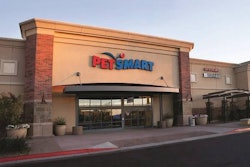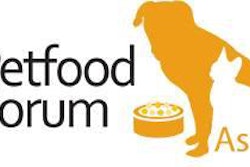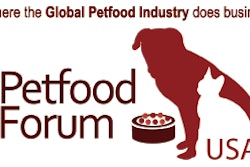Pet food trends have been closely following those from the human food industry for some time now, as the continuing humanization of pets has “pet parents” paying as close attention to what they feed their pets as to what they feed themselves and their two-legged family members. Are the next steps for pet food labels to mimic human food labels, at least to some extent? And perhaps for veterinary medicine to more closely follow human medicine, which has finally (if belatedly) started to recognize that good nutrition is the foundation for good health?
These questions came to mind as I was responding to an email I received from a pet blogger, who had written after reading my post last week about the lack of science in online pet food reviews and how most reviewers, and pet owners, focus on pet food ingredients (and the many misperceptions about them) rather than on the nutrients pets need.
This blogger, Joan Stolar Smith, writes about various pet care subjects, in addition to nutrition, and the posts I’ve read are thorough, well-research and thoughtful. She agreed with the arguments I made in my blog post but accused me—rightly so—of failing to state where people not educated about companion animal nutrition should turn for information instead of online pet rankings.
“Must we take a course in pet nutrition?" Smith wrote. "I suppose the Guaranteed Analysis on the label is part of the answer, but we lay people need a few hints about just what it is we're seeing. I have seen rather complicated mathematical formulas for deciphering some of those percentages; but, realistically, how many pet owners will be inclined to do such calculations as they stand in the pet food aisle? Clearly, we are in the position of having to rely on ‘experts,’ many of whom, as you pointed out, simply aren't deserving of the title.”
All very good points. And the sad thing is, I didn’t include that information in my post because there is no such resource—at least not that I know of. (I would be thrilled if someone responds that I’m wrong!)
I have heard many pet food professionals complain about all the misinformation, especially on the internet, about their products and pet nutrition, and how so-called experts run rampant with crazy opinions about pet food and what’s in it (or not in it). There’s a very simple reason for that: Nature—and the internet—abhors a vacuum. Pet owners (and conscientious bloggers like the one who wrote me) are crying for sound, objective information that they can understand and apply to their pet food buying and feeding decisions. In the absence of that, they turn to whatever else they can find.
I do believe that the new required calorie content statements to come on all pet food labels will help, though only to some degree. At least it will be a starting point of understanding and comparison that pet owners are already familiar with from looking at human food labels. Is it unreasonable to imagine that perhaps someday, we could also see on pet food labels the recommended daily allowances (RDA) for the nutrients needed by cats and dogs? Is there a way to encapsulate and summarize the Nutrient Research Council’s Nutrient Requirements of Dogs and Cats into a standardized RDA panel (specific to each species, possibly also by lifestage) on pet food labels?
While this would obviously entail a lot of work, expense and likely regulatory approval (thus complicating the effort even more, I realize), it would certainly present an opportunity for a progressive pet food company to lead and innovate in terms of transparency and communication with consumers.
Another opportunity exists, I believe, based on yet another analogy to human food. Most of us consumers probably don’t fully understand all the nutrients our bodies need and how to fulfill those needs; but we have started to learn this as the medical community has finally embraced the concept that sound nutrition is the basis for good health, and consumers, media and other information resources have followed along (or, in some cases, driven that realization among doctors). That has prompted consumers to start reading and learning about which types of foods supply which nutrients, which are good and bad for our health for those reasons and so on, which has, in turn, helped us learn to decipher the information on human food labels.
Hopefully that time is coming, at some point, for pet foods. Many veterinarians are also behind the curve on understanding pet nutrition and nutrient needs—and I know some in the industry disagree whenever I write that, but I have heard several vets themselves, not to mention veterinary school professors, make that very statement. Regardless, I do believe more and more veterinarians are trying to learn more, not only on their own initiative but also because they constantly get those types of questions from their clients.
The next step, then, are objective, science-based and factual resources on pet nutrition and nutrient needs that “lay people” (most consumers) can easily comprehend, so they can also start to learn what is best for their pets and how to understand pet food labels to find those foods. What’s needed, I believe, is a collaborative effort between industry, academia and media to take that step. Are there other ways to tackle this challenge?



















